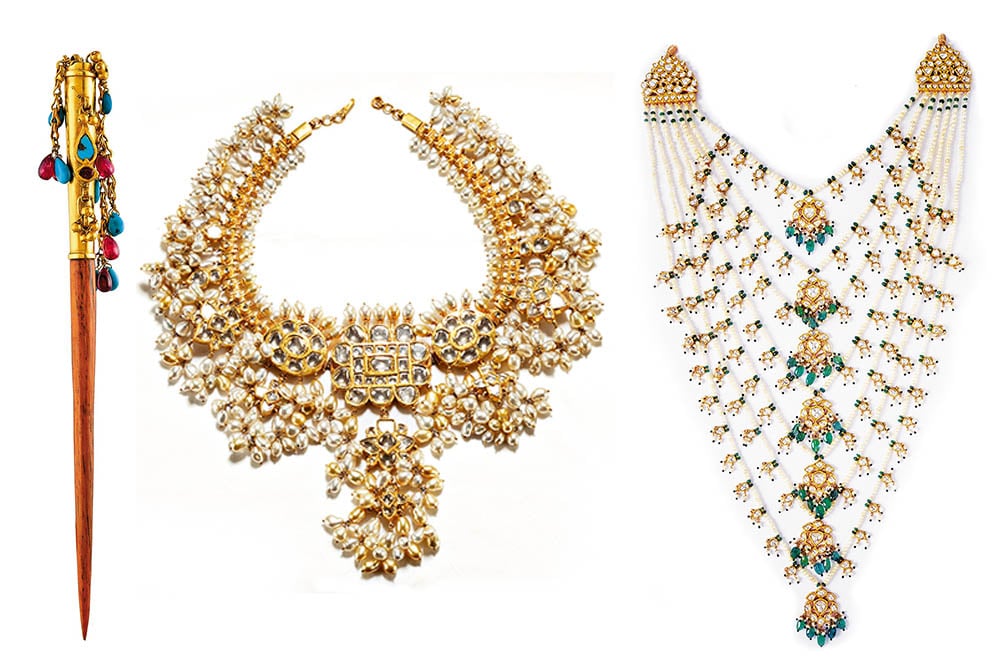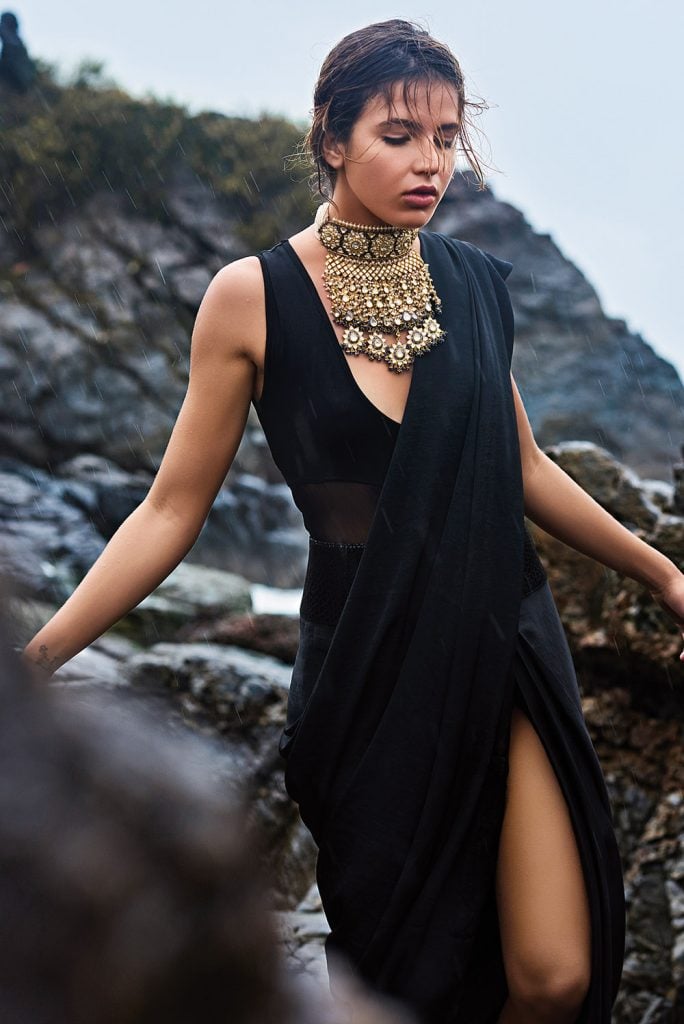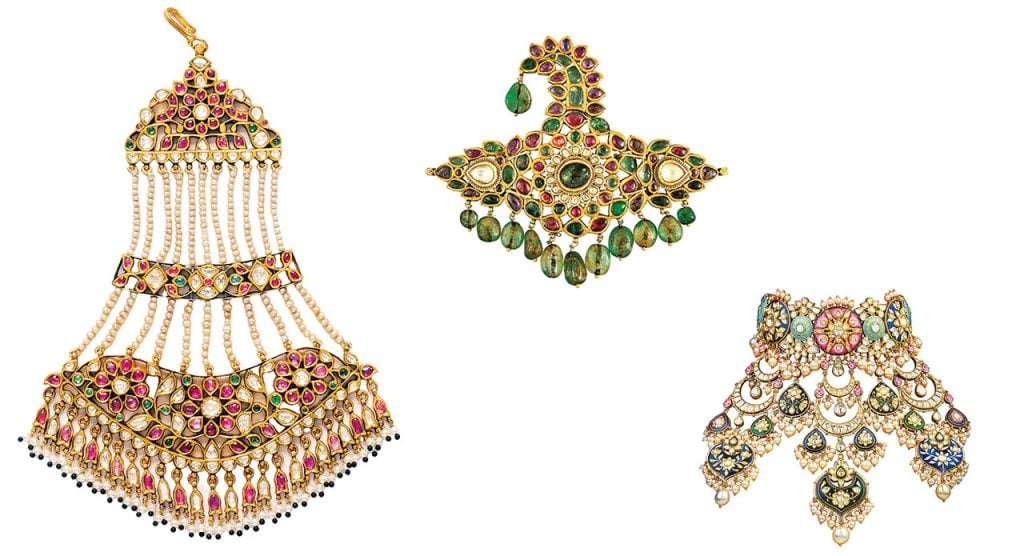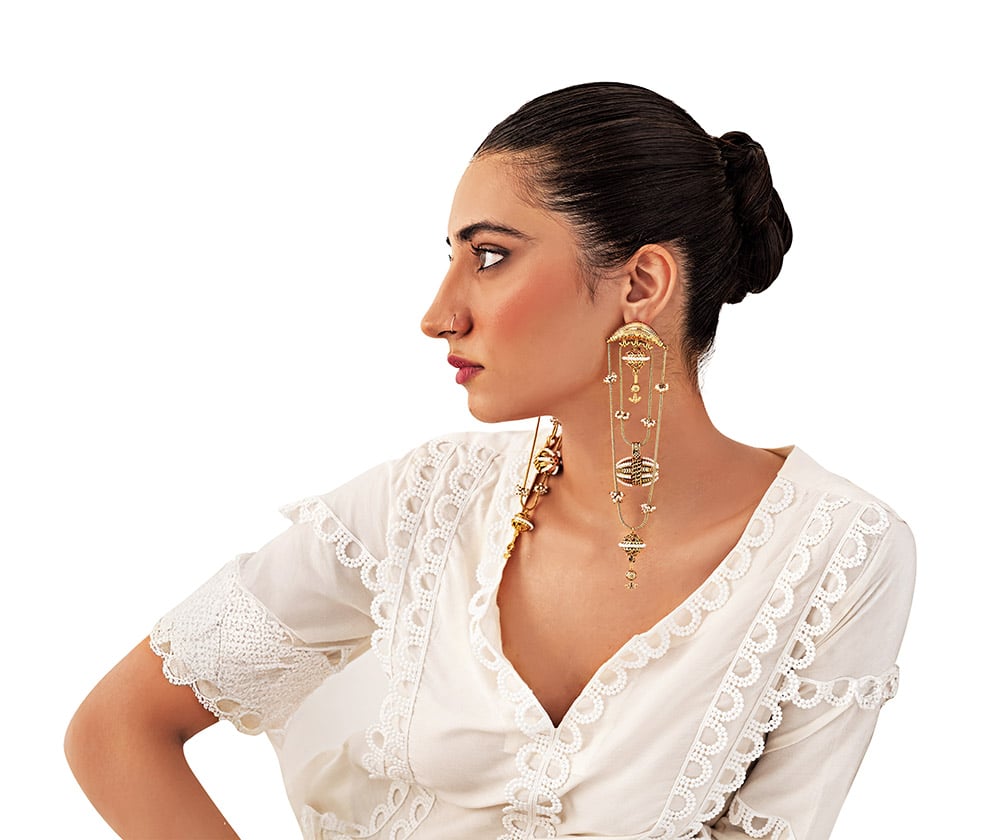A Quiet Re-Invention: Dejhoor, Borla to Mookuthi, How Ancient Jewellery Is Appearing In A New Avatar
Long overlooked heirloom pieces from the Dejhoor earrings of Kashmir, borlas of Rajasthan, to mookuthis of Tamil Nadu are once again in high demand
At Angadi Heritage in Bengaluru, a big crowd had gathered last month in awe to shop Tamil Nadu’s traditional nose ornaments, Mookuthi. Brought in by Chennai-based luxury accessory brand Mookuthi, each of their piece celebrates South Indian culture and craftsmanship with inspirations rooted in Chola temple architecture, the Kolams to even painter Raja Ravi Varma’s palette where yellow gold, rubies, white sapphire, silver pearls and diamonds sit on these tiny nose ornaments. Its designs are so popular amongst buyers that it has fetched the fairly young brand started in 2018 a following of over 55,000 on Instagram, brand loyalists and crowded pop-ups in every city that they head to. “Mookuthi’s displays aim to provide a space where individuals can discover their unique identity through a nose ornament,” says Sarath Selvanathan, designer and founder, Mookuthi, adding that his brand is quite ‘nosy’ and wants to see how different communities, ethnicities, geographies, and cultures receive this trinket. “In this exploration, we are travelling to Delhi, Kolkata, Vishakhapatnam, Gurugram and Hyderabad in coming times,” he says.
At Hyderabad-based heritage jewellery brand, Kishandas & Co., regional jewellery like Hasli — a collar neckpiece worn by Banjara community of Gujarat and Rajasthan, who then migrated to various parts of the country including Telangana, finds a place in their collection. Further, they have the Saatlada Haar worn by Nizams of the Deccan region. It has become close to the hearts of celebrity brides like Deepika Padukone who wore a Saatlada during her mehendi celebrations.

At Jaipur-based luxury jewellery brand Sunita Shekhawat, traditional Aadh choker and borlas from Rajasthan have been reimagined with delicate pastel enamelling and diamond polkis, making them lighter, wearable and versatile.
At Delhi-based handcrafted jewellery brand Amama, shoulder-dusting Dejhoor style earrings of Kashmir traditionally worn by married women are reimagined with Afghani motifs in brass, faux pearls, and 22-karat antique gold plating.
This trend of reinterpreting rare, symbolic, and sometimes forgotten ancient adornments into contemporary and functional pieces is an example of how the Indian jewellery industry is reinventing itself in newer ways to stay relevant by harking on history, culture, identity, functionality and nostalgic awakening in recent times.

Marker of identity
Gone are the days when heirloom jewellery passed down from one generation to another was only kept in family vaults or safes in the bank. In the fast-paced world of today, when people are losing touch with their roots, they wish to wear everyday pieces that are an insignia of their cultural pride and identity. Sunita Shekhawat, Founder & Director of the eponymous brand shares that there is a “strong emotional connect” that people feel with heirloom-inspired jewellery which is enabling brands to re-invent. “Today’s generation, while modern in outlook, is equally proud of their heritage and wishes to express it in a wearable way. The renewed interest comes from the desire to own pieces that are timeless yet relevant, and jewellery that can transition from a wedding to a soirée and eventually become a family heirloom.”
At Jaipur-based Amrapali Jewels, the brand is renowned for its exquisite museum that houses antique and traditional jewellery pieces. From a gemstone studded Sarpech, a turban ornament worn by Mughal, Sikh and Hindu rulers reimagined for today’s groom, to classic Pacheli bangles of Rajasthan crafted into sleeker and lighter forms with modern enamelling to pair with both Indian and Western outfits, the brand is bringing back old jewellery pieces in contemporary styles. “Today, people want pieces that feel personal and timeless, not just trendy. At Amrapali, we see our younger clients embracing jewellery that connects them to their roots but is versatile enough to pair with a white shirt and jeans or an evening gown,” says Tarang Arora, CEO and Creative Director, Amrapali Jewels.

Pop culture influences
Pop culture plays a significant role in the resurgence of heirloom jewellery. From period films like PS-I and II that revived the Chola era-inspired designs like Vankis (armlets), Mookuthis, waist belts, Padmaavat’s Borlas, and Netflix series Heeramandi’s Passas to The Royals show which featured characters sporting a Sarpech — popular cinema and TV shows influence demand of heritage pieces. “We often see characters wearing iconic pieces, be it from the Chola, Pandya, Mughal or the Nizami era. The glamour and beauty of these designs resonate with modern audiences. People are no longer just inspired by the aesthetics but also by the deep connection to history, culture and craftsmanship,” says Pratiksha Prashant,Creative Director and CEO, Kishandas & Co. The jewellery house created over 400 pieces for the films PS-I and II that went off the shelves within a few months after their release.
Another of their standout pieces is the Guttapusallu necklace meaning, “a shoal of small fish” in Telugu. Its unique name is derived from its origins steeped in the pearl fisheries of India’s Coromandel Coast. It has long been a symbol of a bride’s pride in Andhra Pradesh and is a hot-seller even outside the coastal region with markets flooded with its light-weight imitations.

Challenges in Modern Interpretation
The biggest challenge that remains for Indian jewellers while innovating regional heirloom ornaments is striking the balance between old designs and modern interpretations. “Old jewellery is full of detail and often very heavy, but today’s customers want pieces that are light, simple and easy to wear everyday. To make jewellery lighter without losing the fine design is very difficult,” says Piyush Gupta, Director, PP Jewellers By Pawan Gupta adding, “Another challenge is cultural interpretation. Old motifs and symbols have deep meaning, so we cannot just copy them. We have to use them in a careful way. Fine work also takes more time, more skill and more money. So the real challenge is to keep the beauty and soul of the old jewellery, while also making it useful, stylish and comfortable for people today.”
Authenticity is another challenge in melding old with new designs. Shekhawat voices some concerns, “Traditional jewellery is rich with symbolism, history and weight. As designers, we need to respect the craft’s integrity while evolving it for today’s lifestyle. Another challenge is finding master artisans who can execute these age-old techniques with the same finesse.”
Functional yet Timeless
Indian jewellers are reimagining age-old treasures with a contemporary lens by refining form, lightening structure, and introducing innovations in style, enamelling, and modular layering. For instance, Amama’s Darpan collection inspired by Rajasthani mirror-work is crafted with lighter, more versatile materials. “Techniques like modular layering, detachable elements, and unexpected material pairings help us give a contemporary edge to something that feels rooted in heritage,” says Nikita Gupta, Founder, Amama Jewels.
Jewellers are also factoring in sustainability to create modern reinterpretations. As per a report by Grand View Research, the global sustainable jewellery market is expected to reach USD 2.5 billion by 2025, growing at a CAGR of 15%. To thrive in the market, Indian jewellers must prioritise sustainability by sourcing responsibly, minimising waste and energy use, and ensuring greater transparency across their supply chains. This could include adopting recycled gold and silver, choosing conflict-free diamonds, and embracing eco-conscious packaging solutions. “In an era where people are becoming more mindful of their environmental footprint, the shift towards heirloom jewellery that transcends trends and is made with integrity is naturally appealing. It is a step towards reconnecting with things that hold lasting value,” shares Prashant on the rising popularity of such pieces.